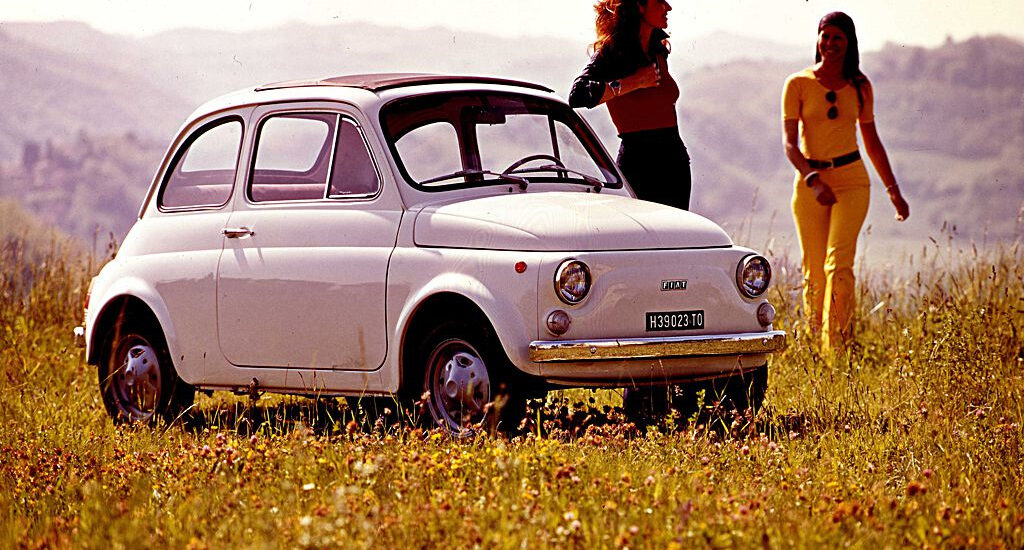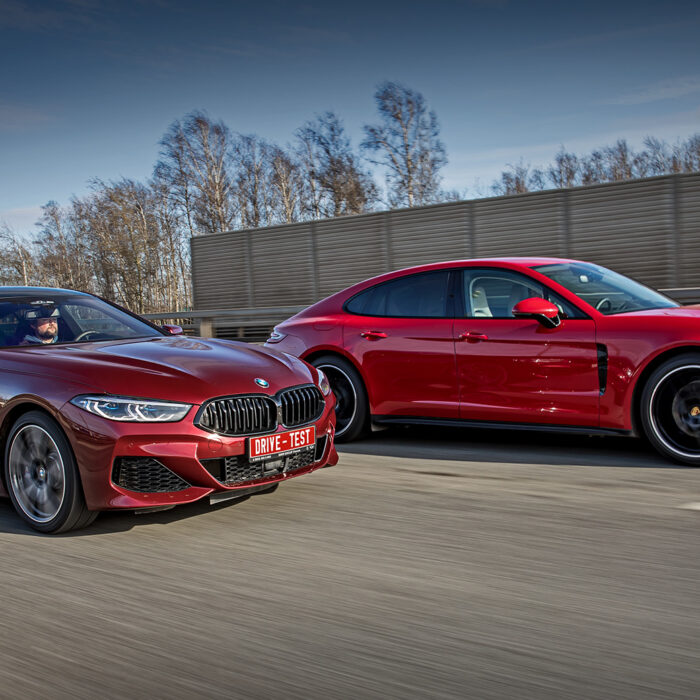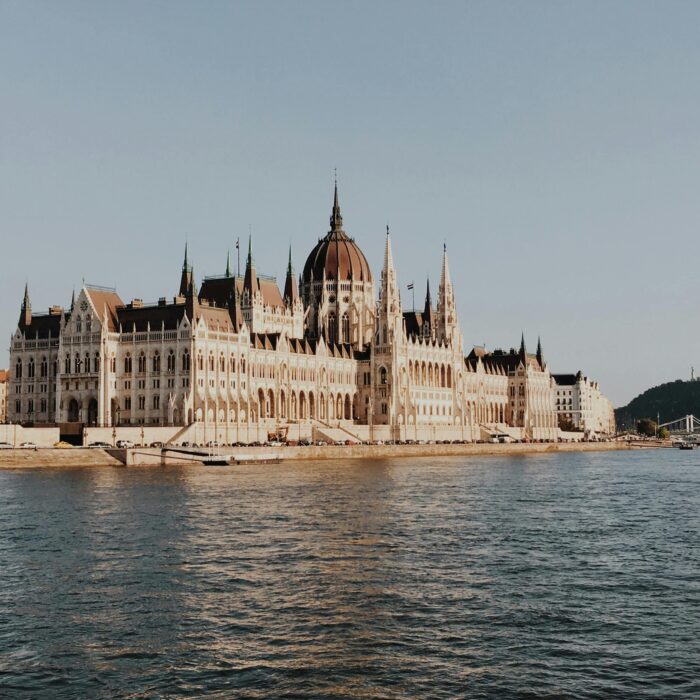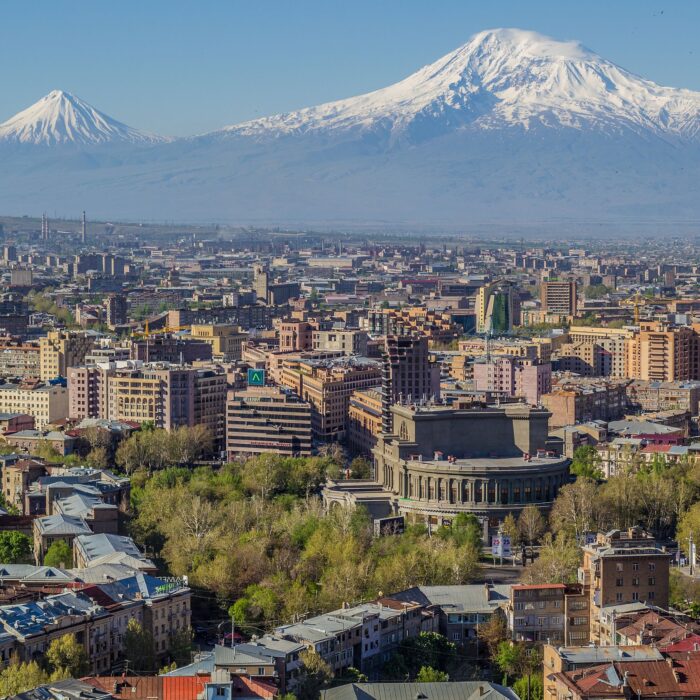In this article, we will talk about the development of automobile production at the enterprises of the Fiat carmaker in the 1930-90s and the concept of car production at the beginning of the present century. In the previous article, you got acquainted with the way it all started, and why the Agnelli dynasty played a key role in the history of the Fiat auto brand.
Pre-war and war years in the history of the Fiat carmaker
The thirties were marked by the development of production of commercial and freight vehicles, as well as the growth of aviation and railway divisions. The Sava holding was formed to promote car sales.
In 1932 and 1936, two models were created that got the strongest response from buyers: the Balilla (also known as the 508), which was nicknamed Tariffa minima for its economy, and the smallest utility car in the world – the Topolino (“little mouse”), which lasted on the assembly line of the carmaker Fiat until 1955.
The Balilla model became a record-holder in sales: around 113 thousand units were sold worldwide. The novelty was equipped with a three-speed gearbox (in 1934, it was replaced by a 4-speed) and a 0.96 l unit with a power of 20-24 hp. This motor accelerated the Balilla to 80 km/h. It is noteworthy that the Balilla was also among the first in the world to receive a “loaded” variation – the 508 S, which was equipped with an engine having a power of 30-36 hp. For the first time, mass-produced cars were equipped with interior ventilation and heating systems.
The FIAT 500 Topolino had an original appearance, a 0.57-liter engine, and a rear-wheel-drive platform mounted on a short frame with slits to reduce weight. Despite the small volume of the power unit, the “little mouse” accelerated to 85 km/h. On average, the Topolino consumed approximately 6 liters of fuel per hundred km of travel. The model also had very diverse variations. Due to the low cost, relatively high reliability and special charm, the car was popular not only in Italy, but also throughout Europe. In the twenty years since the start of production, about 519 thousand copies of the miniature FIAT 500 had been sold. In 1957, a new generation of the Topolino, the style of which was used by Italian specialists when recreating the model in the early 2000s, came off the assembly line.
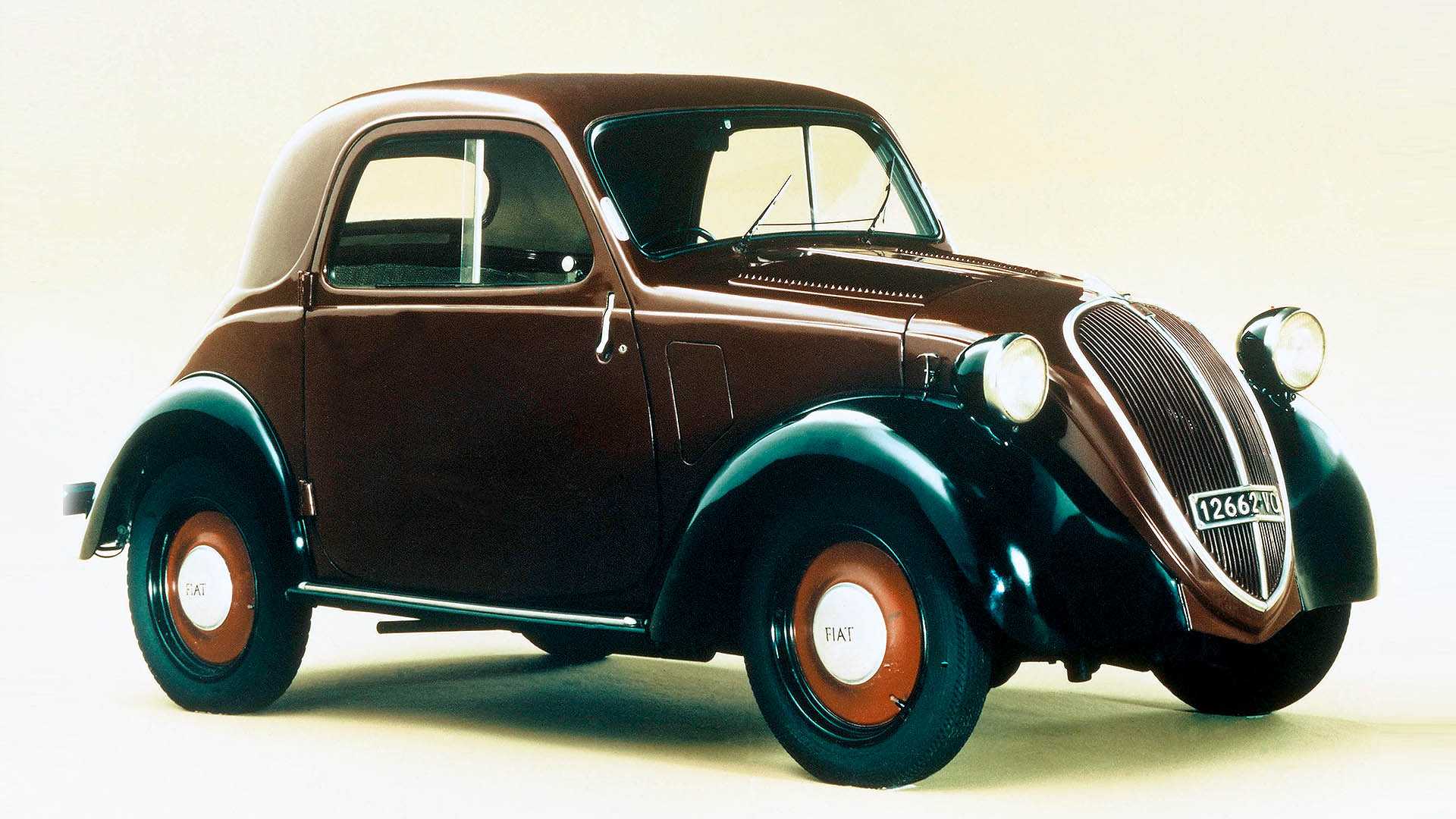
During World War II, Fiat produced vehicles for the Axis powers (Hitler’s military alliance consisting of Germany, Italy, and Japan). It also produced trucks, cars, light vehicles, tanks, aircraft, weapons, and much more. At the end of the war, Fiat’s plants were significantly destroyed by Allied bombing, and after the liberation of Italy, they were also nationalized. Due to the open support for the fascist regime, Agnelli was removed from the leadership, and soon he died (in 1945). Despite the nationalization, Vittorio Valletta remained in fact in charge of the company. This saved Fiat. Valletta retained the loyalty of Agnelli, who himself recommended him for the position. His main goal was the post-war revival of the company. Valletta undertook to restore production with the help of American loans. He carried out a reconstruction and began to increase production capacity.
Construction of the Mirafiori plant
In 1937, the construction of the huge Mirafiori plant began, which incorporated the most advanced principles of production organization at that time. With the construction of this plant, its automotive pearl, the company Fiat has once again confirmed its desire to output mass products. At first, more than 12 thousand people worked within Mirafiori. Today, there are about 5500 of them. Now the plant is still owned by the concern Fiat, producing the Fiat Multipla, the Punto Classic, the Idea, the Lancia Musa models. It also produces Alfa Romeo cars of the latest models: the Competizione and the MiTo. At the beginning of the 21st century, more than a billion euros were spent on the modernization and re-equipment of the plant.
Today, Fiat allocates about 700 million pounds to re-equip the Mirafiori plant in order to create the new all-electric Fiat 500 (urban electric car). Production of the all-new Fiat 500 EV will begin in the second quarter of 2020 on a special assembly line that employs 1,200 people. Fiat forecasts an annual production capacity of 80,000 units with the potential for further expansion if consumer demand exceeds expectations.

Fiat in the 50s and 70s of the last century
In the post-war period, the number of people who wanted to buy a car decreased significantly. In that situation, Vittorio Valletta decided to move production to other countries to reduce the cost. The Fiat 600 and 1300 models were produced at a factory in Yugoslavia. There were about 40 thousand cars produced every year. Fiat also managed to get contracts from NATO, which became a significant part of the group’s profit.
From 1945 to 1960, Valletta spent $800 million to expand and modernize the company and built a large steel plant in Italy. In 1951, the group’s engineers created the G80, the first jet aircraft created in Italy. By 1959, the company’s sales had reached $644 million. From 1958 to 1960, the share price of the Fiat group increased five times. A huge plus was the highly qualified staff, on training of which the managers didn’t skimp, as well as the fastest production lines in Europe.
The 1950s began with the launch of the Fiat 1400, a model with a unit body, which in 1953 became the first Italian car to be offered in a diesel version as well. To equip this car, FIAT also used door armrests and a handbrake located under the dashboard for the first time. In the same year, Mirafiori released the 1100/103 sedan and the universal 103 TV. In five years, the little Seicentos and Cinquecentos would change the face of Italy, making a car available to everyone. Produced in millions, these cars introduced Italians to the rest of the world and became a symbol of the economic miracle embodied in the industrial transformation of the country.
In the early 60s, the company was again privatized. At the head of the concern were grandsons of G. Agnelli Sr. – Umberto and Giovanni Jr., who embodied new approaches to the organization of automobile production in Italy. Taking into account the far-sighted intuition of the management staff, the company released the Fiat 850 subcompact car, produced in the amount of three million units. In 1966, Giovanni Agnelli, a grandson of the group’s founder, became Chairman of the company and initiated a number of projects that helped strengthen Fiat’s position in the global market.
It was in 1966 that the management of the Fiat concern signed an agreement with the Union of Soviet Socialist Republics to build Volga Automobile Plant (VAZ) in Stavropol-on-Volga, which was ironically renamed by the Communist authorities in honor of the striker Palmiro Togliatti, who almost destroyed FIAT in the 20s. VAZ’s production capacity was 2000 cars per day. So the USSR got a huge number of jobs at the main factory and subcontractory factories. The Fiat model is still produced by VAZ. Moreover, when “Russian Fiats” with the name “Zhiguli” were sold abroad (in an export modification), thanks to the lower price, they successfully competed with the “Italians”. Now the middle class of Russian society is aimed at VAZ cars, and many prefer the “classic”, that is, the FIAT-124 in the past.

In 1967, the FIAT-124 was recognized as the best car of the year.
In 1969, Lancia entered the structure of the Fiat carmaker. At the same time, in parallel with the appearance of various models, from the Dino to the 128, 130, 127 and 126 series, Fiat built car manufacturing plants in southern Italy, Poland and Brazil, spreading Italian automotive know-how around the world, including the experience gained after the acquisition of such well-known brands as Autobianchi and Lancia. Then the company’s factories appeared in India, Egypt, South Africa, Morocco and Argentina. In the European market, Fiat companies were opened in Germany, Austria and Spain.
At the end of the 1960s, the Fiat company had 30 factories in which 150 thousand people worked. In 1972, Fiat’s production dropped by 200,000 vehicles, and three years later, 15% of its staff had to be reduced. State regulation had a negative impact on the results of car production. During the period that covered the oil crisis of the 1970s, the carmaker’s concept focused on improving finished products and production processes, which helped to achieve a higher level of automation and establish the production of cars using more efficient methods of automotive manufacturing. In 1976, the improvement of Fiat’s position was unexpectedly promoted by Libya. Muammar Gaddafi purchased 10% of the company for $415 million, which was much higher than the real value and significantly increased the company’s share price.
Conceptual development of the carmaker at the end of the 20th century
In 1980, the group was headed by Cesare Romiti, an effective and strong-minded man who excelled as a manager and administrator.
The actions taken by the concern’s managers in the early 80’s to automate and robotize production began to bear fruit. The modernization has reduced the staff and cost of cars. At the same time, Agnelli decided to narrow his activities at the international level, including leaving the American market, where Fiat faced a large number of competitors. The company also reduced production capacity in South America, ending operations in Uruguay, Chile, Colombia, and Argentina. However, the plant in Brazil was retained.
In 1980, the Fiat Panda, developed by the Giugiaro design studio, was released. By the way, in just a couple of decades, the plants of the Fiat concern produced 60 variations of the Panda and sold about 4 million copies of this model in total. Two years later, the Fiat Uno model appeared. The car used the most advanced technologies, innovative electronics, the latest materials and eco-friendly 1000 Fire engines. It was produced in Italy until 1995, but it is still produced at Fiat’s car factories in Egypt, Turkey, and Poland. Another successful model – Tipo – appeared in 1989. For the advanced technical solutions used in it, it was awarded the title “Car of the year”.
In 1986, Gianni Agnelli purchased Alfa Romeo for $1.75 billion. A year later, the company introduced the Alfa Romeo 164 executive car, which sold well in Italy, but not abroad. That was one of the first problems Agnelli had to face while managing Alfa Romeo.
In 1989, Fiat acquired 49% of another major car company, Maserati. Four years later, it absorbed Maserati completely, and the luxury car manufacturer became part of Gianni Agnelli’s empire.
On the world political scene, Agnelli was on excellent terms with Kissinger and Reagan, thanks to which Fiat participated in the US space program.

In the 1990s, Fiat again faced major problems: the global recession led to the cessation of the group’s growth. In 1990, sales fell by 51%, and Agnelli again faced the task of restoring the company’s position, but his actions didn’t bring the expected success. Since 1995, the company consistently received losses. In 2000, an attempt was made to improve the situation through an alliance with American General Motors: the American giant received a 20% stake in the automotive division of Fiat Auto in exchange for 5.1% of its own. The agreement included a clause that GM could fully acquire Fiat with the consent of the Italian giant’s shareholders.
1998 was marked by the appearance of the remarkable city car Fiat Seicento, as well as the birth of the Multipla model, which was distinguished by exceptional versatility.
Looking to the future: Fiat in the third millennium
In 2001, production of the Fiat Stilo, which featured a modern design, advanced technology, and a variety of luxury options, began. Born a couple of years later, the Fiat Idea became not only the first MPV created by Fiat, but also the first bearer of the new circular emblem that was created in the Centro Stile Fiat to mark the company’s 100th anniversary.
In 2002, Fiat was forced to agree to the help of banks, receiving a loan of €3 billion. In exchange, the management of the Fiat group was required to sell off non-core assets. The insurance company, the financial division, the La Rinascente chain of stores and other areas were sold. Despite that, at the end of the year, losses reached a record high of €4.2 billion.
The following year, the “uncrowned king of Italy” Gianni Agnelli dies of cancer. Six years earlier, his son had died for a similar reason. Gianni’s brother, Umberto, also died in 2004. For the first time in a long period, none of the Agnelli family was at the head of Fiat. But the company’s management was headed by Sergio Marchionne – a hardline manager, almost like the founder of Fiat at the time. He began to reform the automaker with a penalty from General Motors – in the amount of €1.55 billion. The following year, Marchionne increased a profit by 78% to €2.05 billion.
In 2005, production of the new Croma began, designed by the Giugiaro studio, the new Fiat 600 (in the 60th anniversary of the original model’s release), and the beautiful, respectable and attractive Grande Punto. In 2006, the new Doblò and Sedici, the 4x4xTUTTI urban crossover, which became the official car of the 2006 Winter Olympics, went into production.
At the same time, the company started producing commercially successful cars again. One of them is considered to be the relaunch of the Fiat 500 in 2007. The model was a huge success, becoming “the best European car of the year”. Thanks to designers, the car was transformed: the classic forms received a new reading. And then there was the purchase of part of the shares of bankrupt Chrysler. It was Marchionne who decided to revive it, restoring factories that were in disrepair. In 2014, the merger of Fiat and Chrysler was completed and the new concern was named Fiat Chrysler Automobiles. But in 2019, Marchionne left Fiat (and died a few days later at the age of 66). The heir to the Agnelli family business is considered to be John Elkann, Giovanni’s nephew. It was Elkann who promoted the idea of merging all the assets of the Agnelli family into the Exor holding. Since 2010, he has served as Chairman of Fiat, and since 2011 – as Chairman and CEO of Exor. In addition, he is on the board of several Agnelli-owned companies. And Fiat has also acquired tractor production. In the near future, FIAT intends to invest approximately €9 billion in its development.
Today, the Italian-American tandem continues its activities under the single name Fiat Chrysler Automobiles N. V. and with the new logo of the concern Fiat Group. The President of Fiat, as well as part-time Commercial Director of FCA, is 58-year-old Olivier Francois. He has big plans and his own strategic concept, which may allow the carmaker to regain its dominant position in the European car market.

And we want to remind you that choosing any of the vehicles produced by Fiat (including an electric one) as a car doesn’t give you the right to drive it without documents. If you haven’t had time to process an international driver’s license yet, this option is available on our website. Without spending a single extra minute, you will become the owner of the international driver’s license.

Published September 10, 2020 • 12m to read

